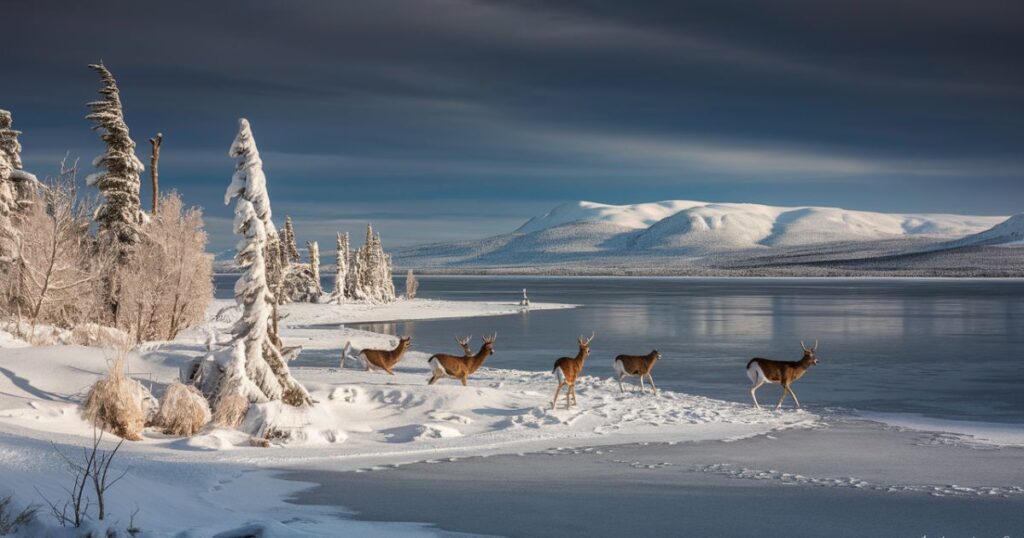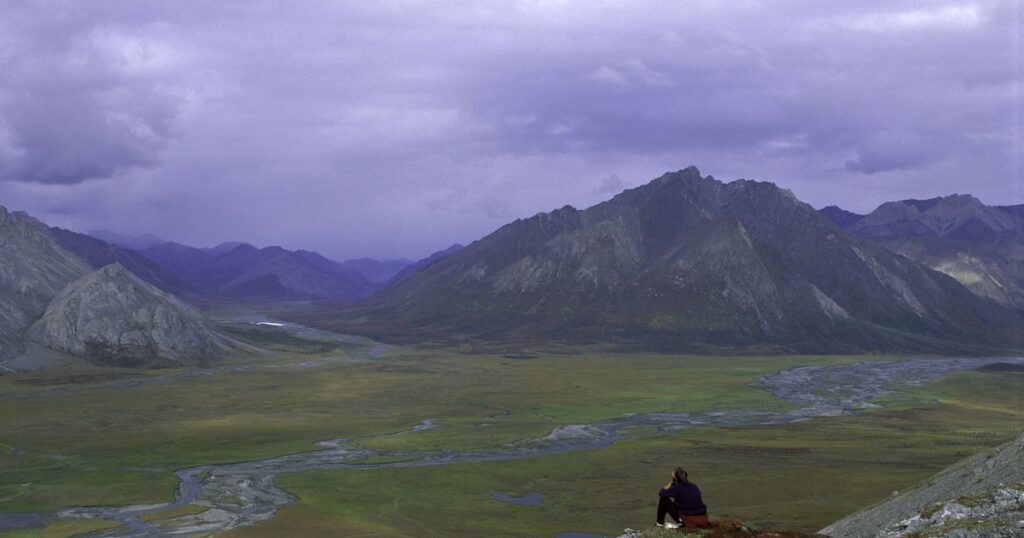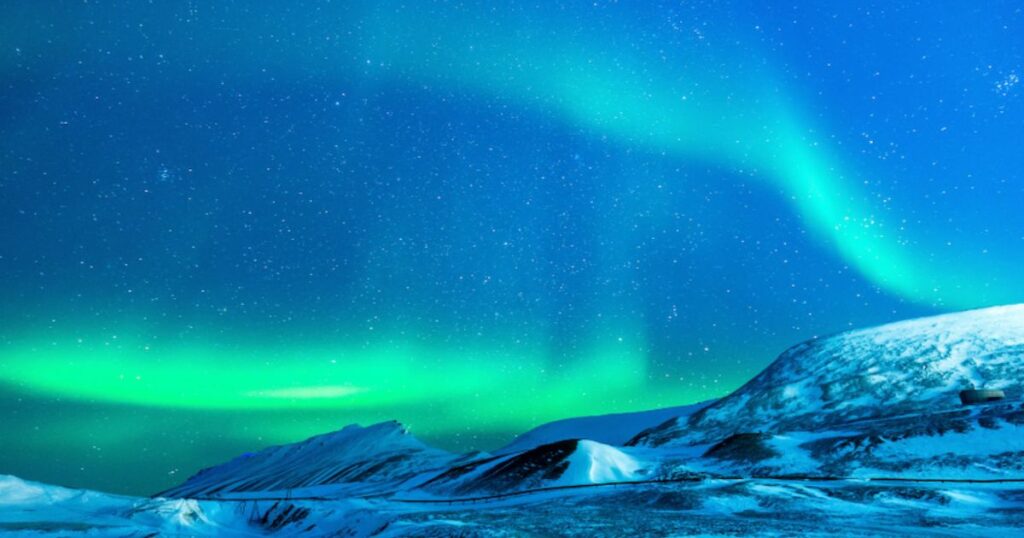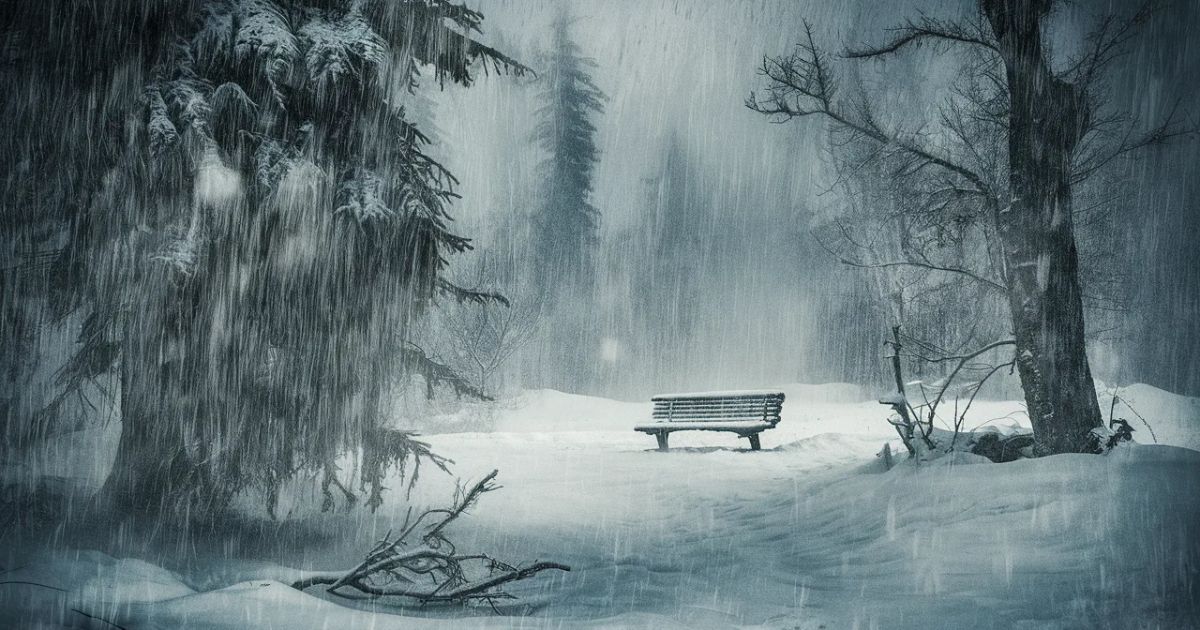While Alaska’s natural wonders captivate visitors year-round, there’s no denying that certain months present unique challenges.
January and February, in particular, showcase the state’s most extreme winter conditions, making them arguably the worst times to visit the Last Frontier – even for intrepid adventurers.
This in-depth guide delves into the specific reasons why these months can be so daunting, while also offering insights into the best alternatives for those seeking an unforgettable Alaskan winter experience.
Reasons to Avoid Alaska from January to February
The depths of winter in Alaska are not for the faint of heart. These two months subject travelers to some of the harshest weather and most formidable obstacles the state has to offer.
Coldest months in Alaska

Alaskans are no strangers to chilly temperatures, but January and February take things to a whole new level of bone-chilling intensity. Depending on the region, temperatures can plummet to a staggering -30°F to -50°F or even lower.
In the northern town of Utqiagvik, formerly known as Barrow, it’s not uncommon for the mercury to dip well below -40°F during these months, making outdoor activities not just unpleasant but downright hazardous.
Even in relatively milder areas like Anchorage, residents and visitors alike must brace for sub-zero temperatures ranging from 0°F to 20°F. Proper winter gear – base layers, wool socks, insulated boots, and face coverings – is an absolute necessity for navigating these coldest months in Alaska.
| Region | Temperature Range |
| North/Arctic (e.g., Utqiagvik) | -30°F to -50°F (or lower) |
| Interior (e.g., Fairbanks) | As low as -40°F |
| South Central (e.g., Anchorage) | 0°F to 20°F |
| Southeast (e.g., Juneau, Ketchikan) | 20°F to 30°F |
The cold was brutal, unlike anything I’d ever experienced. My eyelashes froze together, and I could feel the chill seeping through my layers of clothing. It was a humbling reminder of nature’s raw power.” – Avid hiker, on a January trek in Alaska.
Read More : What States Allow You To Live In An RV In 2024?
Limited Accessibility & Closures
Another significant obstacle during Alaska’s winter months is the limited accessibility to many areas and attractions. Icy road conditions, closures, and reduced flight schedules can make it incredibly challenging to explore the state’s vast expanse.
For instance, access to the iconic Denali National Park becomes severely restricted, with the park road typically closed beyond a certain point and shuttle buses and other services unavailable.
Similarly, cruise ship operations are virtually non-existent during this time, and services in popular port towns like Seward experience a steep decline.
Even reaching remote communities like Utqiagvik and Nome can be a gamble, as icy runways and limited flight schedules can lead to delays and cancellations.
The Alaska Marine Highway System, which connects various coastal communities via ferries, may also operate on a reduced schedule or face weather-related disruptions.
These limitations not only hinder your ability to fully experience Alaska’s natural wonders but can also disrupt travel plans and leave you stranded in unexpected places.
Alaska’s Shortest Days
One of the most significant challenges of visiting Alaska in January and February is the limited daylight hours. During these months, the state experiences what’s known as “polar nights,” where the sun barely rises above the horizon, leaving some regions in near-constant darkness.
In Utqiagvik, for example, there is no daylight at all during January, while other parts of the state may only see a few hours of twilight. Even in more southern areas like Anchorage, you’ll be lucky to get 5-7 hours of daylight in January and 7-9 hours in February.
This lack of sunlight can take a toll on your mood, energy levels, and overall experience. After all, if you’re spending a significant amount of time and money to visit Alaska, you’ll likely want to make the most of the daylight hours.
| Region | Daylight Hours (January) | Daylight Hours (February) |
| Interior | 3-6 hours | 7-9 hours |
| South Central | 5-7 hours | 7-9 hours |
| Southeast | 7-9 hours | 8-10 hours |
| North/Arctic | No daylight | Minimal twilight |
Wildlife Hibernation & Migration

One of the primary draws of visiting Alaska is the opportunity to witness its incredible array of wildlife in their natural habitats. Unfortunately, January and February are not the ideal months for this, as many animals either hibernate or migrate to warmer regions.
For example, the iconic brown bears that roam Alaska’s wilderness go into hibernation during these winter months, making sightings extremely rare.
Similarly, most humpback whales migrate south to breed, leaving Alaska’s waters with significantly fewer of these majestic creatures.
While some resident whales do remain in the state year-round, your chances of spotting them or other marine life are considerably lower during these coldest months.
Frequent Winter Storms & Weather Delays
Alaska’s winters are notorious for their severe weather conditions, and January and February are no exception. These months are prime time for intense blizzards, heavy snowfall, and bitterly cold winds that can bring travel to a standstill.
Whiteout conditions, where visibility is reduced to near-zero, can make roads and runways inaccessible or inoperable for days on end.
Cancellations, road closures, and flight disruptions are common occurrences, leaving travelers stranded and at the mercy of Mother Nature’s fury.
Even if you manage to avoid major storms, the constant threat of inclement weather can cast a cloud of uncertainty over your travel plans, potentially derailing your itinerary or forcing you to miss out on experiences you’ve been eagerly anticipating.
We were supposed to fly out of Fairbanks, but a massive snowstorm hit, and the airport was shut down for three days.
We were stuck in our hotel, watching the snow pile up outside, wondering if we’d ever make it home.” – Traveler’s account of a February visit to Alaska
Worst Time to Visit Alaska, Work Arounds & Benefits
While January and February undoubtedly present some of the most formidable challenges for travelers to Alaska, there are ways to experience the state’s winter wonders without succumbing to the harshest conditions.
Consider visiting during the “shoulder months” or taking advantage of unique opportunities these colder months have to offer.
Visit During the Shoulder Months

If you’re determined to witness Alaska’s winter beauty but want to avoid the extremes of January and February, consider planning your trip during the “shoulder months” of November or March.
These transitional periods offer a sweet spot between the depths of winter and the warmth of summer, providing a more comfortable and accessible experience.
During these months, you’ll still have the opportunity to enjoy classic winter activities like snowmobiling, dog sledding, and cross-country skiing, but with milder temperatures and longer daylight hours than the peak winter months.
Northern Lights Extravaganza
One of the most compelling reasons to brave Alaska’s winters is the chance to witness the awe-inspiring Northern Lights. And while the auroras can be spotted throughout the colder months, November and March are often considered the prime viewing seasons.
These shoulder months tend to experience heightened geomagnetic activity, which influences the strength and frequency of the Northern Lights displays.
By keeping an eye on aurora forecasts and geomagnetic storm predictions, you can maximize your chances of being treated to a truly breathtaking celestial show.
Snowmobiling & Winter Adventures
While January and February offer limited daylight hours, there’s still plenty of time to experience some of Alaska’s exhilarating winter adventures, like snowmobiling, dog sledding, and cross-country skiing.
However, for a more comfortable and enjoyable experience, it’s generally recommended to plan these activities during the shoulder months.
With warmer temperatures and more daylight, you’ll be able to fully immerse yourself in Alaska’s winter wonderland without battling the harshest conditions.
That said, if you do find yourself in Alaska during January or February, don’t write off these activities entirely. Just be prepared for the challenges that come with extreme cold and limited visibility.
Worst Time to Visit Alaska, Summary
While Alaska’s allure extends throughout the year, there’s no denying that January and February present some of the most daunting challenges for visitors.
Between the bone-chilling temperatures, limited accessibility, short daylight hours, scarce wildlife sightings, and frequent winter storms, these months can test even the hardiest of travelers.
With proper preparation and reasonable expectations, it’s still possible to experience the magic of an Alaskan winter during this time. Just be sure to pack the appropriate gear, remain flexible with your plans, and prioritize safety above all else.
For those looking to avoid the extremes altogether, consider timing your visit during the shoulder months of November or March. These transitional periods strike the perfect balance, offering a taste of winter’s wonders without the harshest conditions.
Regardless of when you choose to visit, Alaska promises to leave you in awe of its rugged beauty and natural splendor. Just be mindful of the unique challenges each season presents, and plan accordingly.
Worst Time to Visit Alaska, Outside of Winter
While winter in Alaska undoubtedly poses its fair share of obstacles, it’s not the only time of year that can prove challenging for visitors. The summer months, particularly June through August, bring their own set of adversities in the form of relentless mosquito swarms.
These pesky insects can be more than just a nuisance – they can be downright unbearable, especially in inland areas away from the coast.
Many Alaskans and seasoned visitors recommend avoiding the peak of summer if you’re particularly susceptible to mosquito bites or simply can’t stand the incessant buzzing and itching that comes with their presence.
By the time September rolls around, however, the cooler nights and dwindling mosquito populations make for a more pleasant experience. This further emphasizes the appeal of the shoulder seasons, offering a respite from both the extreme cold of winter and the insect onslaught of summer.











